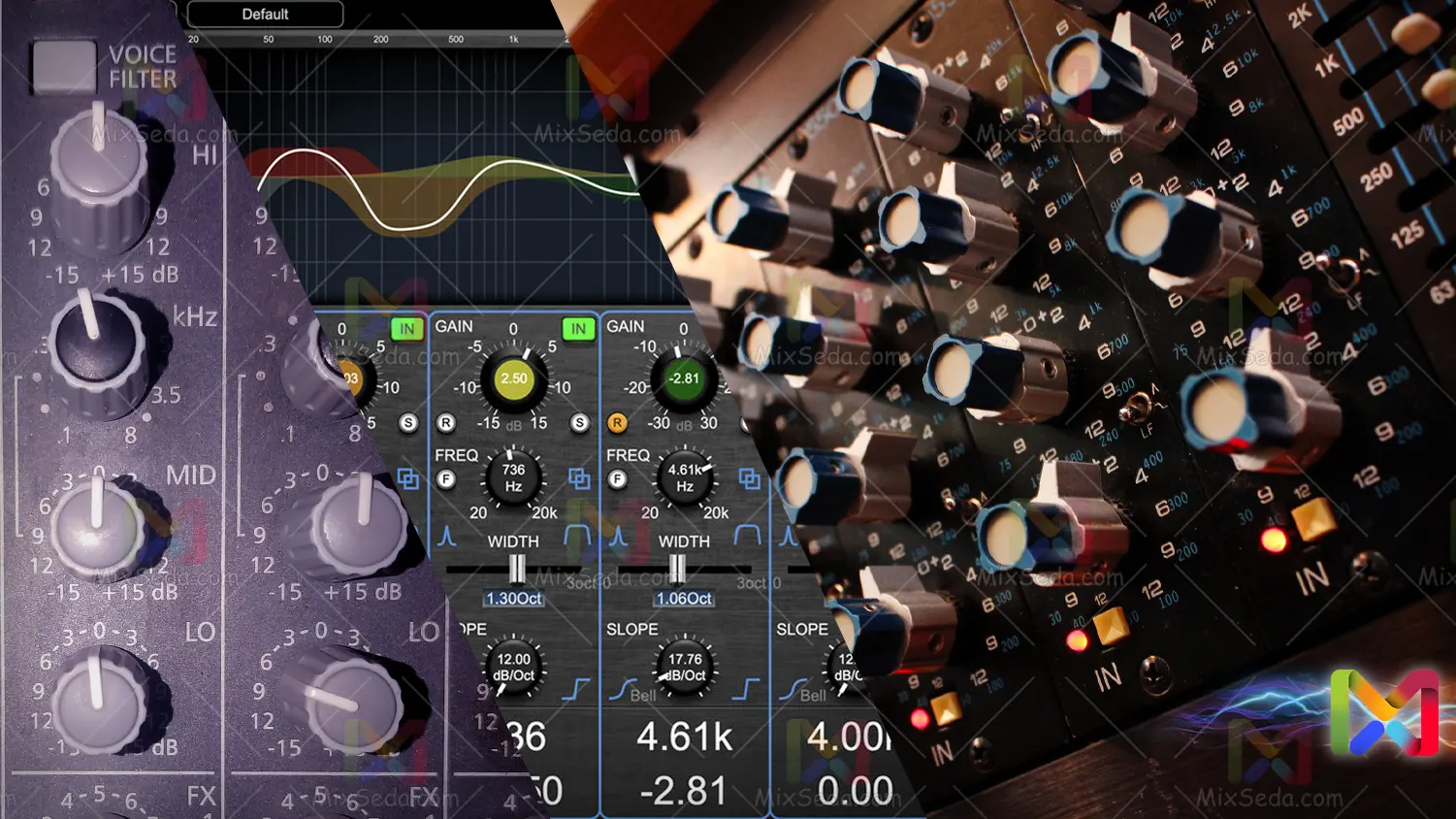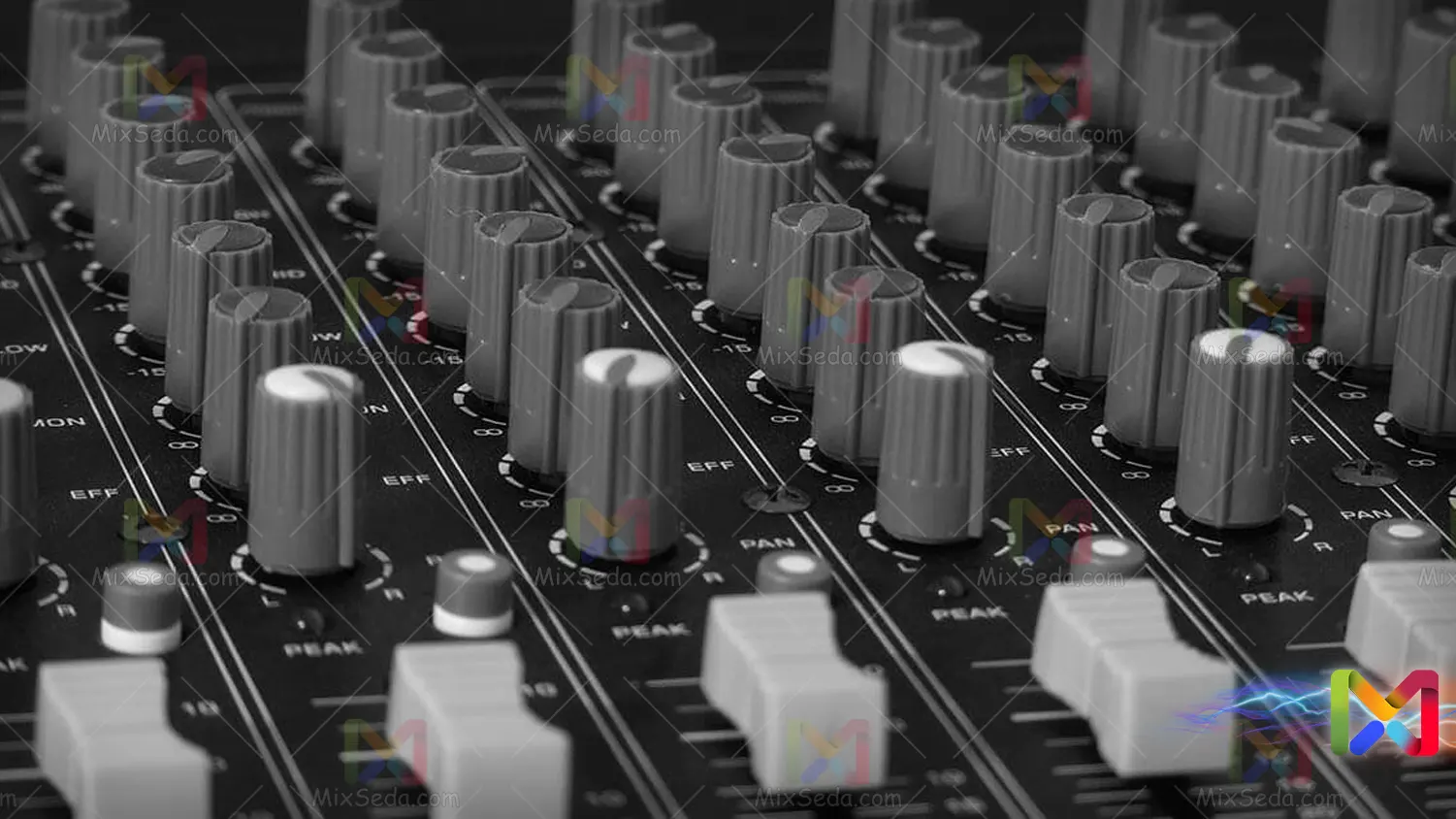
introduction
In most analog mixers we have a parametric equalizer to adjust the volume of each line. In many digital mixers this equalizer is also available, but the difference is that in digital mixers this part is usually applied digitally to the audio signal.
In older mixers, we had two volumes to adjust the volume, one to adjust the volume and the other to adjust the sharpness. After a while a volume was added to the parametric equalizer. This was the average volume. Working with these volumes is more experimental. By increasing the volume of the medium volume, the sound becomes louder.
In more professional mixers such as the Dynacord PM 2200 mixer, another volume called KHz has been added to these volumes, which helps to apply the Mid volume to different hertz of the audio signal.
In the slightly more professional mixers we have two Mid volumes. One of these volumes is called HiMid and the other is LoMid. And it makes sense to have two KHz volumes since we have two Mid volumes.
In some analog mixers, we have a 10 to 15 band equalizer for each of the audio input lines, but it is more professional than digital mixers which have no restrictions on giving an equalizer to the lines. Well, in this article I will go through each of these volumes:
- Acoustic volume control (Hi)
- Bass Volume Control (Lo)
- Medium volume

Acoustic volume control
This volume has different names in different mixers. But the most common are the names (Hello). The function of this volume is to control the underlying volume. The higher the volume, the clearer the line input sound will be. In fact, this volume controls the high frequencies. Be careful in setting the volumes (Hello). One reason for whistling may be high volume.
Excessive volume (Hi) causes scratches and air in the sound. What I mean is that the death in the harrow increases. It also annoys the listener too much. Some fans like the high pitched sound so the sound has to be high pitched in order to get their attention. Be sure to note that the sound should be balanced so that the listener does not get tired of listening to it or the sound is not disturbed.
Volume control
This volume is for controlling the low frequencies. This volume is also known by various names such as bass, but the most common is Lo. The higher the volume, the higher the volume. I intend to increase the volume of the singer's or praise's voice. The lower the volume, the louder the sound.
For example, if you play a song from one line. Increasing the bass volume increases the bass volume and the drum beat. I suggest you try not to increase this volume too much. Boosting low frequencies with loud noises can severely damage the listener.
In the scoreboards, try adjusting the volume (Hi) for the praise voice more than the volume (Lo) so that the praise voice is clear. For the Zakir sound, the higher the volume of Lo (Hi) than the volume (Hi), the lower the sound. Especially when saying dhikr as "Hussein", the voice is heard much better. However, try to keep these relationships in balance so that the words spoken by the reader or praise are clear to the listener.
If the volume is high, the microphone may pick up the feedback sound of the bands and create a "wow" sound in the bands. Of course, this depends on several things, such as:
- To adjust the bands
- Sound coming out of the mixer
- To adjust the microphone
- Microphone type
- Band type and band equalization
- Amount of gain and sound power supply
- Position of bands and subwoofers
- AND…
Volume kHz (KHz)
In a parametric equalizer, this volume depends on the average volume. In effect, this volume determines which signals the mid-range volume is applied to. Or rather, this volume is used to determine the frequency of the midrange. Well, in my opinion, using this volume is entirely experimental, and the more I think about it, the more I come to the conclusion that I can't explain it in writing. One thing I want to point out here is that sometimes the sound of the praise or singer's voice becomes a horn. This can be due to several things:
- Medium-high volume
- Lack of volume adjustment (KHz)
- The genre type of the singer's voice
- Type of bands and their equalization
- Use of inappropriate and poor quality microphones
- Wrong setting of the main equalizer of the mixer
Medium volume
The volume of the mids, also known as the mids, is used to adjust the average frequency. Medium volume is used in many boards to thicken the sound of memory. It is also called the "exhaust" sound. To do this, set the kHz volume to about 5KHz in the middle. Now, by reducing the volume of the mid-range, the sound becomes more voluminous. Note that the higher the kHz volume, the louder the sound will be.
Notes
- The volumes (Hi) and Lo (LO) are opposite to each other. If you have a whistle in the letters "s" and "sh", you can increase the volume of Lo instead of decreasing the volume (Hi).
- Try not to change these volumes when the sound is playing from the line.
- The slightest change during audio playback is clearly recognizable to the listener. Especially in the medium and kilohertz volumes.
- Try to preset the volumes before starting and do not touch them during the program.
- Adjust the parametric equalizer for each person individually because people's sex is different.
- Some people's larynx is already damaged for various reasons and their voice is scratched. For these people, try increasing Lo's sound so that their scratches don't bother the listener.
